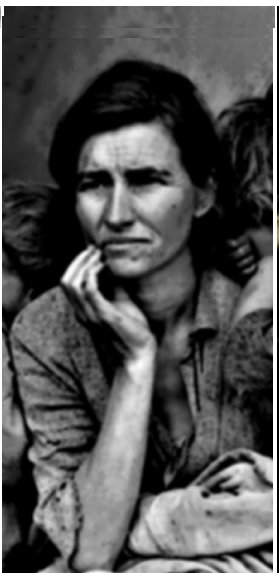California
Indians Matt Sommer
Albert L. Hurtado was born and
raised in Sacramento and received
his Ph. D. at UC Santa Barbara.
He was the winner of the 1989 Ray Allen Billington
Prize awarded by the Organization of American Historians for the best book in
American frontier history. Albert L. Hurtado
currently has the Paul H. and Doris Eaton Travis Chair in Modern American
history at the University of Oklahoma.
When studying Indian life in California,
the thing that is most amazing is the number of Indians that perish after
contact with Europeans. The book Indian
Survival on the California Frontier by Albert L. Hurtado
is about Indian contact with Europeans and the effects of contact. In California
in the late eighteenth century, when Hispanic settlement first began, the
Native American population was estimated at around 300,000. By the 1850¡¦s that
number had been reduced to around 30,000. In his book, Albert H. Hurtado wrote, ¡§these astonishing numbers represent the
human cost of dispossessing California Indians and replacing them with a
non-native population.¡¨ 1
The introduction of the book
primarily concerns the mass number of Indians that died after contact with
Europeans. However, the author also gives an overview of the ways in which
Indians lived in northern California.
Hurtado describes that survival was more difficult
for Indians in California because
there were many separate Indian cultures. Nevertheless, the small groups of
Indians were often able to accommodate themselves to white invaders by either
attempting to fight them off or integrating themselves into European culture.
Chapters one and two deal with Indian family and culture and the ways the
Indians clashed with the Europeans when they first met. Indians valued family
above all else. The basic household unit for Native Americans in California
consisted of a couple and their children. As typical of many families
throughout history, the men would go out and hunt while the women took care of
duties at home. The women worked very hard, perhaps even harder than most men.
Upon the arrival of Europeans to California,
Europeans established many missions to convert Indians and integrate
them into Hispanic culture. At first, Indians were reluctant to go to the
missions, but disease, death and hunger left them with no other option. Indian
labor became a necessity in frontier life. Much of Spanish colonization would
not have been possible ¡§without native workers to till the soil and work the
mines.¡¨ 2 John Sutter was one example of a European who used Indian
labor by using it to establish a settlement called New Helvetia.
Chapter three describes how Indians became a labor force in California.
The Anglos used Indian labor just like the Spanish. Anglos used Indians for
labor and to fit white needs. It was necessary for the Anglos to keep the
Indians in fear to be able to keep the Indians disciplined. John Sutter managed
to keep the Native Americans disciplined by alerting them with a bell when it
was time to do something. Hurtado explains that ¡§the
clang of Sutter¡¦s bell announced that time was money, that it marched onward,
and that it waited for no man, including Indians in the 1840¡¦s.¡¨ 3 Furthermore,
Sutter kept order by whipping, jailing, and executing rebels. Sutter¡¦s New
Helvetia threatened Indian communities by draining them of able bodied men.
When Indians were first instituted as a labor force, the overall Indian
population declined. Chapter four centers around how the
Indians were viewed and portrayed by the European invaders to California.
The image of Indians as docile helped achieve Manifest Destiny. More Europeans
moved to California when they
learned that Indians were easy to control. Rather than trying to control the
Indians, most Europeans preferred getting rid of the Indians altogether. However,
in California, Indians were more
beneficial to Europeans than in other areas in the United
States. Chapter five deals with the
different laws created to control the Indians and the different ways in which
Indians in California were dealt
with by the Europeans. Certain groups of Native Californians raided European
settlements to steal horses. These raiders made travel dangerous, threatened
livestock, and even killed whites who challenged them. As a result, Europeans
made Indians carry passports to travel throughout California.
Indians were even shot on the pretext of being a horse thief, with or without
proof.
Chapter six mainly concerns Indians
during the Gold Rush. Before the Gold Rush, Indians outnumbered whites ten to
one. During the 1850¡¦s, however, whites outnumbered Indians two to one. The
mining districts were an especially dangerous place for Indians because there
was little law and order. Indians were impoverished everywhere and risked
infection and disease. In spite of this, Indian labor was more valuable than
ever. Indians eventually learned that they could bargain gold for goods, which
made surviving a little easier. Indians were only able to survive during the
Gold rush by ¡§accommodating, working, fighting, and hiding out.¡¨ 4 Chapters
seven and eight deal with how the Indians lived and what happened to them in
the 1850¡¦s. After 1848, whites established reservations to exert more direct
control over the Native Americans. Whites thought that by putting Indians in
reservations they could keep Indians in check and also help them become members
of European society. Europeans created five military reservations in 1853. Most
Indians stayed in their areas of residencies rather than going to the
reservations, but over the next decade federal and state troops forced Indians
on to the reservations. Hurtado wrote that the
reservations were hardly a safe place for the California Indians. Whites killed
and kidnapped Indians on reservations throughout California.
Warfare depleted much of the Indian population in the 1850¡¦s. Europeans
outnumbered Indians and had better technology so Indians stood very little
chance at defeating the Europeans. Reservations and ranchos, if properly
established, would have saved many Indian lives. Indians wanted whites to leave
them alone so they could live as their forefathers had. Hurtado
states that ¡§most [Indians] wanted to live in their traditional territory,¡¨ so
they could do just that. 5 Previously, John Sutter had
employed many Native American workers, but during the 1850¡¦s he preferred to
hire white workers because he thought they were more productive and cost
effective.
The central idea of chapter nine is
the Indian women in the 1850¡¦s and their lives. The population of Indian women,
like that of Native Americans in California
as a whole, decreased significantly after contact with the Europeans. The
Indian frontier in California was
interesting because it was a sexual frontier. There were many interracial
sexual encounters throughout California
since the arrival of the Spaniards. The Spanish were fairly open about sexual
encounters with the Indians and as a result the Spanish and Indians created a
mixed race, called mestizos. The Anglo men were
different from the Spanish because they refrained from encounters with the
Indians. However, there are several instances and records of Anglo men mixing
with Indian women. Anglo men would disrupt Indians¡¦ communities when they had
relations with Indian women. One explanation for why Anglo men mixed with
Indian women, despite the fact that this was often frowned upon, was because
they had to satisfy their needs for sex and companionship in a world where the
only available women are Indian. Hurtado wrote that
some Native American women resorted to prostitution because of hunger and
privation. Various diseases transmitted through the contact of these two
cultures only made Indian survival more difficult. Syphilis made it difficult
for Native Americans to recover losses in their declining population. In the
mining districts where there was little law and order, there were common cases
of Indian women being raped and molested. Indians increased abortions and
infanticide to kill undesirable children fathered by whites. High death rates
offset healthy birthrates in even the best of Indian communities. Chapter ten, Indian Survival on the California Frontier,
is about Indian survival in the 1860¡¦s. As the 1860¡¦s wore on, it became
increasingly difficult for Native Californians to find work, especially from
employers who would treat them well. In Monterey,
Indian men were mostly unskilled laborers on ranchos while women were often
domestics in Anglo and Spanish homes. The Monterey
population, although it lived in peace, lived in poverty and could not sustain
itself. A census taken in Butte in
1960 showed no identifiable conjugal Indian couples. Butte
rancho owners at that same time segregated sexes and discouraged marriage and
child rearing. Native Americans in California
became reliant on white economy and federal assistance for survival. Throughout
California, Indian men
outnumbered Indian women. In addition, some potentially fertile Indian women
lived with white men, creating a shortage of women available to Indian men. Hurtado describes the irony in the integration of Indians
into white society when he says that ¡§economic and social integration created
conditions that permitted individual Indians to survive, but also contributed
to an overall decrease in native numbers.¡¨ 6 In Anglo and Hispanic
California, the transformation of native Californians from a racial and
cultural majority into a working class minority contributed to a drastic and
tragic population decline. The conclusion of the book deals with the overall
population decline of native Californians and sums up the book. In the
conclusion Hurtado writes about how people of color
throughout history were prime candidates for labor exploitation. He also
describes how the reservation system failed because it was ill conceived.
Disease, starvation, and violence, along with infertility, contributed to
thousands of deaths. Indian labor served only to help individuals survive and
not the entire Native American population. Paradoxically, segregation was the
only way to protect Indian populations and yet not enough land could be set
aside to do so. Indians in different regions throughout California
fought and accommodated according to their needs and local conditions. Simple
survival required flexibility, tenacity, and heroism. However, no matter what
Indians attempted, they had their lands stripped from them.
Hurtado¡¦s
thesis is that Indians in California
were unique because they were able to accommodate themselves to white
incursions, whether through warfare or obedience. Hurtado
effectively supports his thesis. For example, the Indian horse raiders in California
were able to survive as a culture by fighting white expansion through the theft
of the whites¡¦ horses. Also many Indians were able to survive through obedience
by becoming laborers on white farms and servants in whites¡¦ households.
Although it seemed less noble to serve whites rather than fight them with
pride, it was a more effective survival strategy. Although Hurtado
was spot on in some aspects of his thesis, he was also wrong in many ways. Hurtado states that Indians accommodated themselves to the
Europeans, but Indians, for the most part, were not able to ¡§persist in a
hostile world.¡¨7 Indian population
significantly decreased after contact with the Europeans. This shows that
Indians were unsuccessful at integrating into European society.
Throughout the book Hurtado
asserts that Indians persisted even in the face of adversity. However, Hurtado contradicted himself by providing statistics that
shows this is largely untrue, as 90 percent of the population of Native
Americans disappeared within the first hundred years of contact with Europeans.
Hurtado describes the situation as not being chaotic
but ¡§a catastrophe for the Indians.¡¨ 8 Also throughout the book the
author¡¦s point of view seems to be unwaveringly on the side of Native
Americans. Any time Indians are mentioned in the book, they are mentioned as
victims. However, Hurtado is correct in this
assumption of native Californians being the victim. Whether in California
or the United States
in general, Native Americans were constantly victimized and pushed out of their
land by Europeans. Hurtado¡¦s assumptions about Native
Americans as victims are because Hurtado is a New
Left historian. Hurtado grew up in the modern age and
was taught in school that the Indians were pushed out of their land. If Hurtado had written this book a hundred years earlier, he
would see the Indians as undesirable rather than as victims of European
expansion.
Raymond Starr, a book reviewer,
describes Hurtado¡¦s book as ¡§a useful synthesis of
the adaptation and survival of California Indians in the period from about 1819
to 1860.¡¨ 9 Starr also says the author focuses on several important
themes, including the evolution of the Indian labor force, the consequences of
Indian integration into the market economy, and the continued collapse of the
Indian population. Also, Roger Nichols describes Hurtado¡¦s
book, in a review, as having ¡§a wide-ranging and imaginative discussion of
significant issues.¡¨ 10 Starr also says that Hurtado¡¦s
book has many flaws. For example, Starr states that Hurtado
was wrong when he used modern psychological literature to discuss the rape of
Indian women because Hurtado did not indicate the
extent of sexual assault that occurred when he used such literature. In
addition, he states that Hurtado could have gained
more insight into the family structure and the causes of Indian demographic
collapse if he had investigated the demographic standards on missions. Starr
also states that, despite a few flaws, Hurtado¡¦s book
is worth reading and is a significant contribution to history.
Starr and Nichols are correct when they
state the book is an insightful look at the lives of native Californians in the
mid nineteenth century. Hurtado¡¦s book provides a lot
of information about Indian and European encounters, Indians as a labor force,
and the causes of demographic decline. However, Hurtado
is incorrect when he states that ¡§Indians had adapted to successive changes in
white society.¡¨ 11 Although some Indians were able to survive,
ninety percent of the California Indian population did not survive. Despite any
false assumptions that Hurtado makes, the book is
worth reading because of the quality of information contained in it about the
lives of California Indians and their struggle for survival.
California
life during the mid eighteenth century was very similar to the antebellum south
in the way whites dealt with the colored members of their communities. After
the Civil War, southern blacks, although technically free, had as little
freedom as before the war. The United States
restricted blacks from traveling about without a pass with laws called black
codes. Indians in California were
treated in much the same way. Hurtado states that ¡§as in the south... Anglo Americans
deemed it necessary to assert control over numerous nonwhite people whose
economic, social, and political places were racially defined.¡¨12
Indians were also similar to southern blacks because they were used as a labor
force to fit white demands for agriculture.
Despite similarities with blacks, Hurtado sees California Indians as unique from other
Indians and also as important to the rest of the country. Hurtado
believes that Indians in California
were unique from others in the ways in which they adapted to white incursions.
He states that Indians knew when it was necessary to fight for their survival
and also when it was necessary to be submissive to white invaders. California
Indians were also unique because their agricultural and labor contributions
helped advance some European colonies in California.
As Hurtado states, ¡§Indians were saved so much as
possible for labor.¡¨ 13 Furthermore, although the Indian reservation
system set up in California
failed, it set an example for the rest of the country of how to deal with the
Native Americans.
In
conclusion, disease, starvation, and violence were the main causes of Indian
population decline. Although Indian labor was highly valued, especially during
the Gold Rush, it was not the salvation of California Indians. The federal
government also played a role in the decline of Indians because it took many
steps to establish dominance over the Indians, but few steps to insure their
survival. However, some Indians were able to survive through many difficulties
despite the fact that ¡§they had fewer options than whites who faced radical
change.¡¨ 14 The fact that any Indians survived is a tribute to their
strength and courage in horrific times.
1. Hurtado, Albert L. Indian
Survival on the California
Frontier. New Haven: Yale University Press, 1988 1.
2. Hurtado, Albert L. 24.
3. Hurtado, Albert L. 57.
4. Hurtado, Albert L. 124.
5. Hurtado, Albert L. 153.
6. Hurtado, Albert L. 209.
7. Hurtado, Albert L. 1.
8. Hurtado, Albert L. 1.
9. Starr, Raymond. ¡§Book Review.¡¨ The Journal of San Diego
History Fall 1989. 31 May
2008 <
http://www.sandiegohistory.org/journal/89fall/br-indian.htm>.
10. Nichols, Roger. ¡§Indian Survival on the
California Frontier.¡¨ Yale
University Press
September 1990. 31 May 2008
<http://yalepress.yale.edu/book.asp?isbn=9780300047981>
11. Hurtado, Albert L. 123.
12. Hurtado, Albert L. 92.
13. Hurtado, Albert L. 55.
14. Hurtado, Albert L. 218.





















